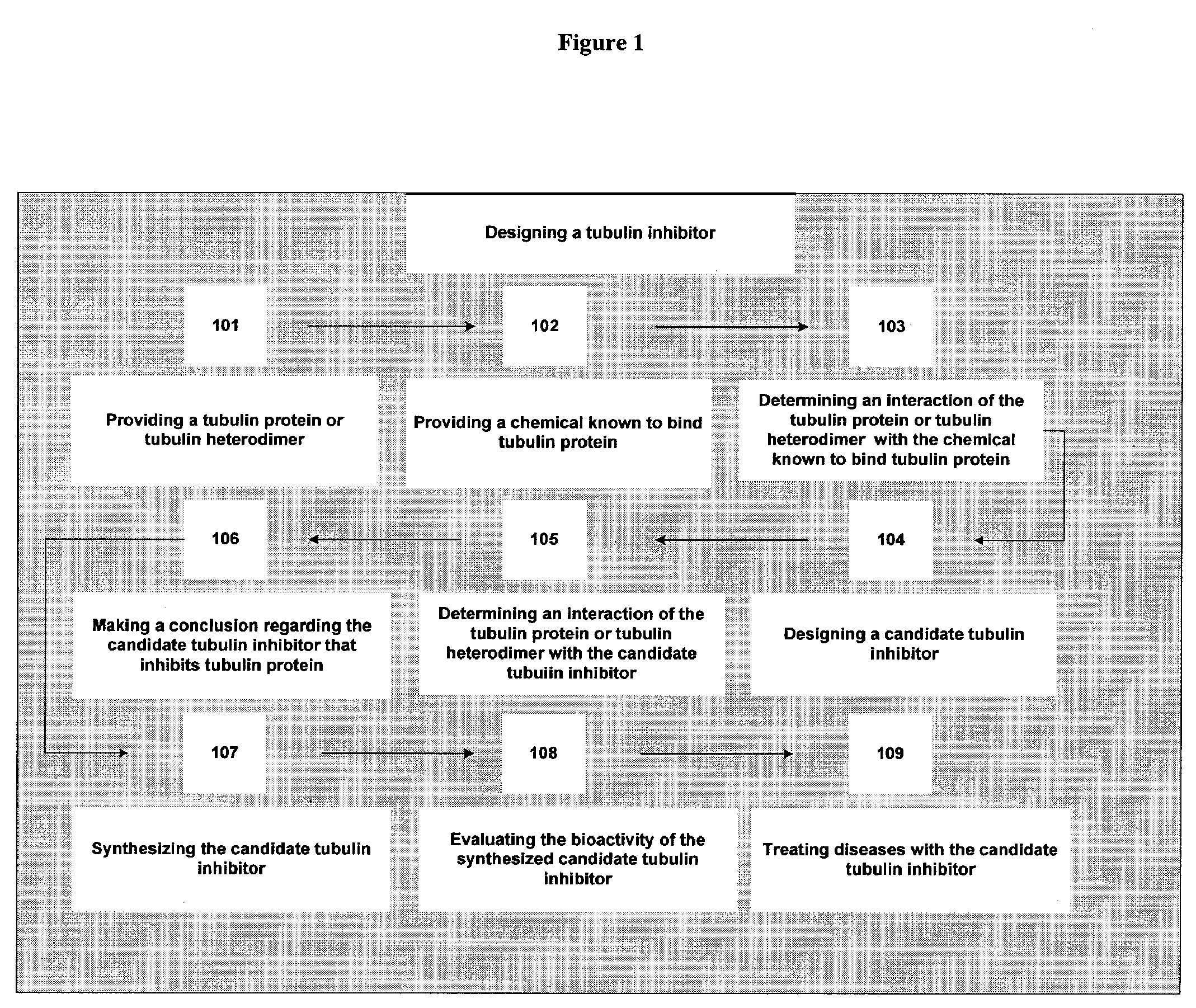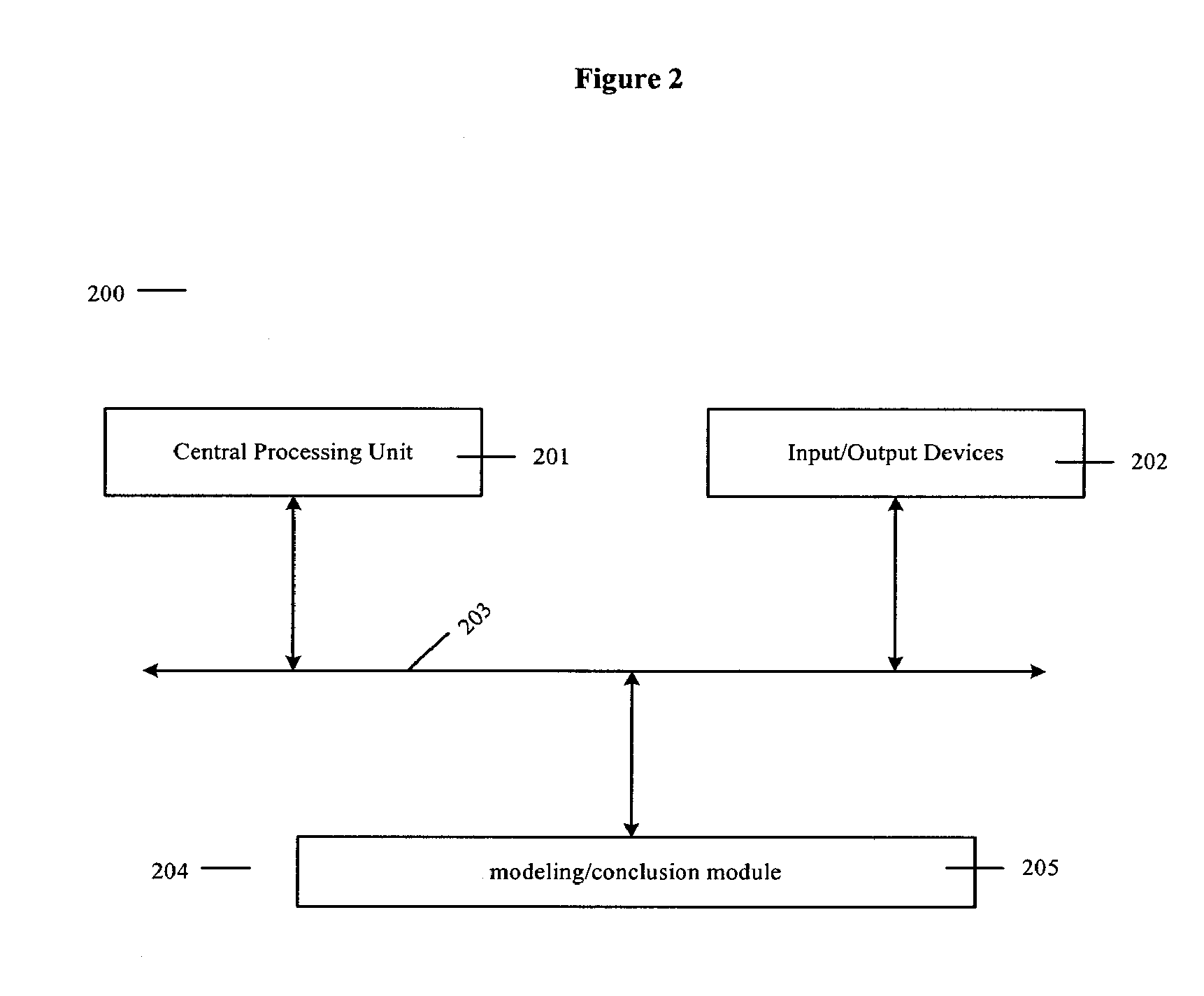Drug design for tubulin inhibitors, compositions, and methods of treatment thereof
a tubulin inhibitor and drug design technology, applied in the direction of phosphorous compound active ingredients, instruments, molecular structures, etc., can solve the problem of small number of positive “hits
- Summary
- Abstract
- Description
- Claims
- Application Information
AI Technical Summary
Benefits of technology
Problems solved by technology
Method used
Image
Examples
synthetic example 1
Synthesis of 1-(4-(3-amino-4-methoxyphenoxy)-3,5-diiodophenyl)ethanone (Formula IIIB)
[0314]The synthesis of 1-(4-(3-amino-4-methoxyphenoxy)-3,5-diiodophenyl)ethanone, represented by formula IIIB, was carried out as follows:
[0315]
[0316]The compound of formula IIIB was synthesized from 1-(3,5-diiodo-4-(4-methoxyphenoxy)phenyl)ethanone (DIPE) according to the following procedure: The synthesis of DIPE has been previously described, e.g. in U.S. Pat. Nos. 5,922,775, 6,303,629, 5,908,861 and 6,326,402.
[0317]Nitration of DIPE to Form 1-(3,5-diiodo-4-(4-methoxy-3-nitrophenoxy)phenyl)ethanone
[0318]Nitration of DIPE was performed with a mixture of 1.4 equiv. 69% nitric acid and 2.2 equiv. 96% sulfuric acid at Ti<5° C. in methylene chloride. The reaction was complete after 30 min. According to TLC a single product was formed, indicating that mono-nitration took place. The product isolated by extractive workup was obtained in 95% yield with a purity of 99.9 area %. As the nitro-reduced product...
synthetic example 2
Synthesis of 1-(4-(3-hydroxy-4-methoxyphenoxy)-3,5-diiodophenyl)ethanone (Formula IIIA)
[0321]The synthesis of 1-(4-(3-hydroxy-4-methoxyphenoxy)-3,5-diiodophenyl)ethanone, represented by formula IIIA, was carried out as follows:
[0322]
[0323]Diazonium Salt Formation
[0324]A diazonium salt:
[0325]
was formed by adding an aqueous solution of NaNO2 (2.0 equiv.; c=1.4 g / mL) at Ti=0-5° C. to a suspension of the compound of formula IIIB, as obtained in synthetic example 1. The reaction was followed by HPLC. The diazonium salt is eluted at RRT of 0.78. Diazonium salt formation was complete within 5 hours. The conversion was 91% and the purity of the diazonium salt was 87.9 area %. Excess nitrous acid was destroyed by addition of urea; and the reaction mixture was tested with starch iodine paper.
[0326]Conversion of the Diazonium Salt to the Compound of Formula IIIA
[0327]The diazonium salt was added to 6N H2SO4 (30.6 equiv.) and the reaction mixture stirred at Ti=100° C. for 24 hours. The diazoniu...
example 1
Effect on Tubulin Polymerization
[0328]In the following experiments the candidate tubulin inhibitors, separately or in combination, at 1 to 5 mM concentrations inhibit the GTP-dependent polymerization of MTP as determined by an optical test. This inhibition is critically dependent on the concentration of GTP. The quantitative correlation between the concentrations of candidate tubulin inhibitors and GTP, under conditions of a linear rate of MTP polymerization, follows Michaelis-Menten kinetics and the inhibition portrays a “mixed” type, where km for GTP and Vmax are altered simultaneously. Candidate tubulin inhibitors inhibit MTP polymerization parallel to their anti-tumorigenic action in vivo. The MTP site is one of the early cellular response sites of the candidate tubulin inhibitors.
[0329]Exposure of human mammary cancer cells (MDA-MB-231) to 1 mM of a candidate tubulin inhibitor induces abnormal spindle structures within 18 hours of drug treatment, thus a putative candidate tubul...
PUM
| Property | Measurement | Unit |
|---|---|---|
| molecular weight | aaaaa | aaaaa |
| pH | aaaaa | aaaaa |
| pH | aaaaa | aaaaa |
Abstract
Description
Claims
Application Information
 Login to View More
Login to View More - R&D
- Intellectual Property
- Life Sciences
- Materials
- Tech Scout
- Unparalleled Data Quality
- Higher Quality Content
- 60% Fewer Hallucinations
Browse by: Latest US Patents, China's latest patents, Technical Efficacy Thesaurus, Application Domain, Technology Topic, Popular Technical Reports.
© 2025 PatSnap. All rights reserved.Legal|Privacy policy|Modern Slavery Act Transparency Statement|Sitemap|About US| Contact US: help@patsnap.com



